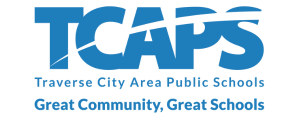Retirement Plan Information
Click on the dropdown menus below to learn more about 403(b) and 457(b) retirement plans.
About the 403(b) Retirement Plan
A 403(b) plan is a tax-deferred retirement plan available to employees to supplement other retirement programs/savings. It is sometimes referred to as a Tax Deferred Annuity (TDA) or a Tax Sheltered Annuity (TSA), giving the false impression that participants must invest in annuity products. Under this program, employees may invest in a fixed annuity, variable annuity and/or mutual funds (as determined by the plan). Employees are able to set aside money for retirement on a pre-tax basis through a salary reduction agreement. Contributions and earnings grow tax-deferred until the time of retirement, when withdrawals are taxed as ordinary income.
The salary reduction agreement is directed into the 403(b) investment options chosen by the employee through an approved vendor account. Investment options vary widely and come with various risks/returns/fees. The 403(b) contributions grow tax-free until withdrawal at retirement or termination of employment. The Internal Revenue Service (IRS) sets the maximum contribution limits. Contributions made to this plan are considered separate from contributions made to 457(b) plans for purposes of IRS maximum contribution limits. Thus, an employee can set up a 403(b) and 457(b) plan and maximize contributions (per IRS limits) to both plans.
Because contributions are made before tax, taxes become due when withdrawals are made at retirement or termination of employment. The IRS imposes a 10% penalty for early withdrawal (before age 59½). Early withdrawals are allowed only at the time of termination or, while still employed, in the case of “extreme financial hardship” or “unforeseeable emergency” as defined in the plan document (per IRS guidelines for hardship withdrawals). As of March 1, 2010, participant loans are permitted under the TCAPS 403(b) plan (administered by TSA Consulting Group).
Employees wishing to pursue any transactions related to this plan (rollovers, loans, hardship distributions, etc.) must coordinate them with the third-party administrator, TSA Consulting Group (TSACG). Appropriate forms can be obtained by going to the ![]() TSACG website, under employee information. Changes to payroll deductions can be made using TSACG’s Salary Reduction Agreement form and must be forwarded to the TCAPS Payroll Department for initial processing.
TSACG website, under employee information. Changes to payroll deductions can be made using TSACG’s Salary Reduction Agreement form and must be forwarded to the TCAPS Payroll Department for initial processing.
DISCLAIMER: This is a summary only. In all cases the plan document and current IRS regulations will prevail.
For more information, please contact the Business Office at 231.933.1720 or 231.933.1739.
About the 457(b) Retirement Plan
A 457(b) plan is a non-qualified, tax-deferred compensation plan that gives an employee another vehicle to save for retirement. Contributions are made from pre-tax wages and under this arrangement an employee agrees to take a reduction in salary. The salary reduction contributions reduce the employee’s taxable compensation for federal and state income tax purposes only. Those contributions do not reduce wages for the purposes of FICA taxes or determining Social Security benefits.
The salary reduction contribution is directed into the 457(b) investments. Investment options within this plan will be less varied than under a 403(b) plan. The 457(b) contributions grow tax-free until withdrawal at retirement or termination of employment. The Internal Revenue Service (IRS) sets the maximum contribution limits. Contributions made to this plan are considered separate from contributions made to 403(b) plans for purposes of the IRS maximum contribution limits. Thus, an employee can set up a 457(b) and 403(b) plan and maximize contributions (per IRS limits) to both plans.
Because contributions are made before tax, taxes become due when withdrawals are made at retirement or termination of employment. Unlike a qualified plan (such as a 403(b) plan), the 457(b) plan does not impose the 10% penalty for early withdrawal. Early withdrawals are allowed only at the time of termination or, while still employed, in the case of “extreme financial hardship” or “unforeseeable emergency” as defined in the plan document (per IRS guidelines for hardship withdrawals). There are no loan provisions available under the TCAPS 457(b) plan.
TCAPS offers its employees a 457(b) plan through the TBA Credit Union. Employees wishing to pursue any transactions related to this plan (rollovers, hardship withdrawals, etc.) must coordinate them with our third-party administrator, TSA Consulting Group (TSACG). Appropriate forms can be obtained by going to the ![]() TSACG website, under Employee information. Changes to the amount being deferred from salary (payroll deduction) can be made using TSACG’s Salary Reduction Agreement form, which must be forwarded to the TCAPS Payroll Department for initial processing.
TSACG website, under Employee information. Changes to the amount being deferred from salary (payroll deduction) can be made using TSACG’s Salary Reduction Agreement form, which must be forwarded to the TCAPS Payroll Department for initial processing.
DISCLAIMER: This is a summary only. In all cases the plan document and current IRS regulations will prevail.
Additional Information Regarding Retirement
 About TCAPS 403(b) Plan
About TCAPS 403(b) Plan 403(b)/457(b) Notice to All Employees
403(b)/457(b) Notice to All Employees 403(b) Agent List
403(b) Agent List 403(b) Solicitation Guidelines
403(b) Solicitation Guidelines Employee Guide for Tax-Sheltered Retirement Plans (MRIC)
Employee Guide for Tax-Sheltered Retirement Plans (MRIC) Annual Benefits Retirement Guide
Annual Benefits Retirement Guide MPSERS-Office of Retirement Services
MPSERS-Office of Retirement Services MRIC-Michigan Retirement Investment Consortium
MRIC-Michigan Retirement Investment Consortium Retirement Checklist
Retirement Checklist TSACG Website (Plan Administrator)
TSACG Website (Plan Administrator)
